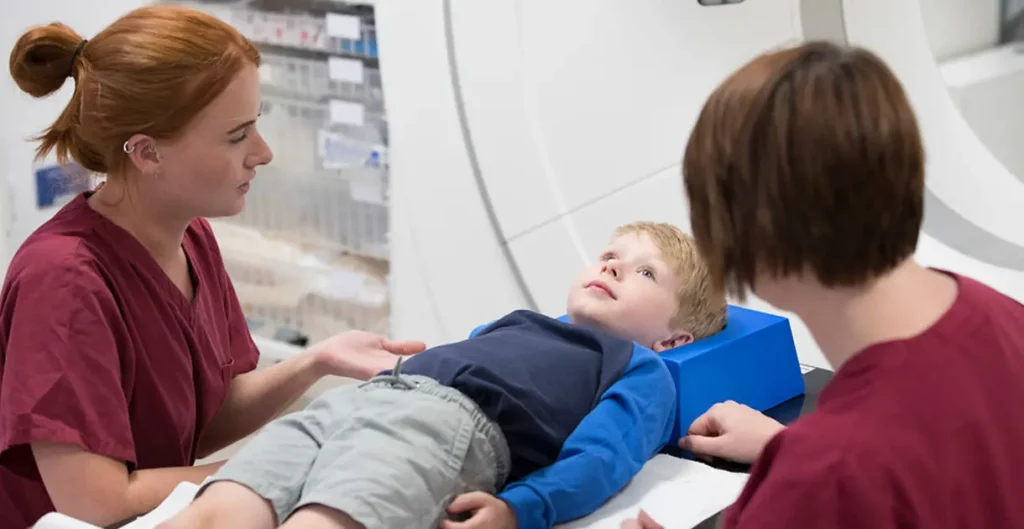Few experiences are more overwhelming for families than facing a childhood cancer diagnosis. In these pressing moments, accurate and timely information becomes the foundation for effective care. That’s where pediatric imaging plays a fundamental role. Using specialized, child-focused imaging techniques, physicians can pinpoint tumor locations, assess how far the disease has spread, and guide precise treatment planning. The approach enhances diagnostic accuracy and also helps doctors tailor therapies that give young patients the best chance for recovery.
Pediatric Imaging in Cancer Diagnosis
Pediatric imaging plays a key role in the diagnosis of cancer in children. When doctors suspect cancer, they use various imaging techniques to locate tumors and understand their characteristics. Here are the key imaging techniques:
- X-rays: Frequently used as an initial imaging method, they are effective for identifying bone cancers that affect growing children.
- CT scans: These provide detailed views of soft tissues and organs, helping doctors determine the size and exact location of tumors for treatment planning.
- MRI scans: These deliver exceptional detail of the brain, spine, and soft tissues without utilizing radiation, making them beneficial for pediatric patients.
- Ultrasound technology: A painless technique that examines abdominal organs and detects masses or abnormal growths, such as kidney tumors or liver masses.
Each imaging method offers unique insights, collectively contributing to a comprehensive understanding of the cancer and guiding effective treatment strategies.
Imaging Tools for Treatment Planning
Imaging plays a key role in developing personalized treatment plans for cancer patients. It provides detailed insights into the tumor’s characteristics, location, and progression. Here’s how imaging contributes to individualized care:
- Accurate diagnosis: Advanced imaging techniques enable the precise identification of the type, size, and location of the tumor, facilitating an accurate diagnosis.
- Treatment planning: Imaging guides the selection of therapeutic interventions, helping to determine whether surgery, chemotherapy, radiation, or a combination of treatments is most appropriate.
- Monitoring response: Regular imaging allows clinicians to track the tumor’s response to treatment, enabling timely adjustments to therapy if necessary.
- Detection of recurrence: Post-treatment imaging helps in identifying early signs of cancer recurrence, which is key for prompt intervention.
Leveraging these imaging capabilities helps healthcare providers make sure that each patient receives a tailored treatment approach.
Imaging Methods for Progress Tracking
Pediatric imaging is used throughout treatment to monitor the effectiveness of therapies. Regular scans help doctors see whether tumors are shrinking, staying the same size, or growing larger. The information allows medical teams to adjust treatments quickly if needed.
Follow-up imaging helps identify new areas of concern that may develop during treatment. Children’s bodies change rapidly as they grow, and regular monitoring makes sure treatment remains appropriate. Doctors can modify treatment plans based on what ongoing scans reveal about the cancer’s response. Long-term monitoring through imaging helps detect any signs of cancer returning after treatment ends.
Schedule a Pediatric Imaging Appointment
Pediatric imaging provides the detailed information medical teams need to fight childhood cancer effectively. From initial diagnosis through long-term monitoring, these specialized techniques inform treatment decisions, enabling children to achieve the best possible outcomes. If your child requires pediatric medical imaging services, contact a trusted pediatric imaging center near you to schedule an appointment today.

